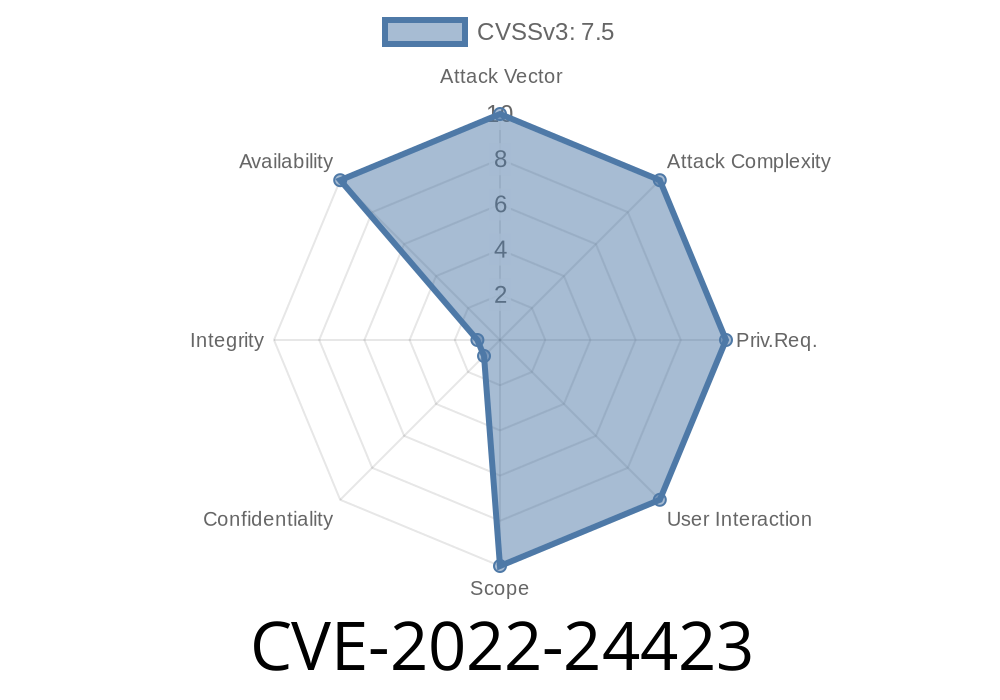In recent times, the need for efficient and reliable server management has become essential for organizations to ensure optimum performance and security. To address this need, Dell provides Integrated Dell Remote Access Controllers (iDRAC) that allows administrators to manage servers efficiently. However, researchers have recently discovered a critical denial of service vulnerability (CVE-2022-24423) in Dell iDRAC8 versions preceding 2.83.83.83. This vulnerability enables remote unauthenticated attackers to cause resource exhaustion in the webserver, resulting in a denial of service condition. This post will provide an extensive explanation of CVE-2022-24423, its exploit, and ways to mitigate the potential risks associated with it.
Exploit Details
The CVE-2022-24423 vulnerability is present in Dell iDRAC8 versions prior to 2.83.83.83. A remote unauthenticated attacker could exploit this vulnerability to initiate a Denial of Service (DoS) attack on the webserver, causing it to crash due to resource exhaustion. The attacker simply needs to generate a large number of requests to a specific endpoint, overwhelming the server and making it unable to respond to legitimate requests.
Here's a simple Python code snippet that demonstrates how an attacker might exploit this vulnerability:
import sys
import requests
target = sys.argv[1]
num_requests = int(sys.argv[2])
endpoint = f"https://{target}/path/to/vulnerable/endpoint";
for _ in range(num_requests):
response = requests.get(endpoint, verify=False)
print(f"Sent request { _+1 } / {num_requests}")
The above script takes two command-line arguments, the target IP address, and the number of requests to send. It then sends the specified number of requests to the vulnerable endpoint, potentially causing a DoS attack.
To mitigate this vulnerability, follow the official recommendations in Dell's security advisory (link below) and apply the necessary updates as soon as possible. If you are using an iDRAC8 version older than 2.83.83.83, it is highly advised that you update to the latest version immediately.
Original References
For more information about the CVE-2022-24423 vulnerability, refer to the following official documentation:
1. The National Vulnerability Database (NVD): https://nvd.nist.gov/vuln/detail/CVE-2022-24423
2. Dell Security Advisory: https://www.dell.com/support/security/en-us/details/540/DELL-SECURITY-ADVISORY-DSA-2022-xxx
Mitigation and Prevention Strategies
1. Update your Dell iDRAC8 firmware to version 2.83.83.83 or later to address the vulnerability. This can be done through the iDRAC web interface or via the Dell Repository Manager. Find the guidance for updating your iDRAC firmware in Dell's official documentation: https://www.dell.com/support/article/en-us/sln129177/updating-the-dell-emc-idrac-firmware?lang=en
2. Implement network filtering rules to restrict access to the iDRAC webserver only to authorized IP addresses. This ensures that only authorized personnel can access the management interface.
3. Regularly monitor Dell's security advisories to stay informed about other potential vulnerabilities and follow the recommended mitigation steps.
In conclusion, CVE-2022-24423 is a severe vulnerability in Dell iDRAC8 versions prior to 2.83.83.83, allowing remote unauthenticated attackers to cause a denial of service condition through resource exhaustion. Organizations using affected iDRAC versions should update their firmware as soon as possible and implement the suggested mitigation strategies to prevent potential exploits. Stay vigilant and stay safe.
Timeline
Published on: 04/21/2022 21:15:00 UTC
Last modified on: 06/22/2022 18:15:00 UTC
